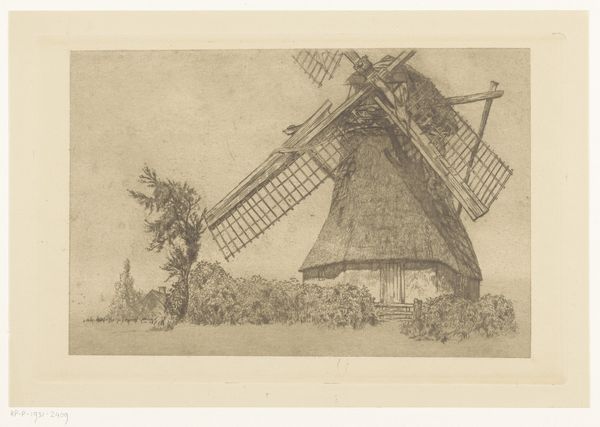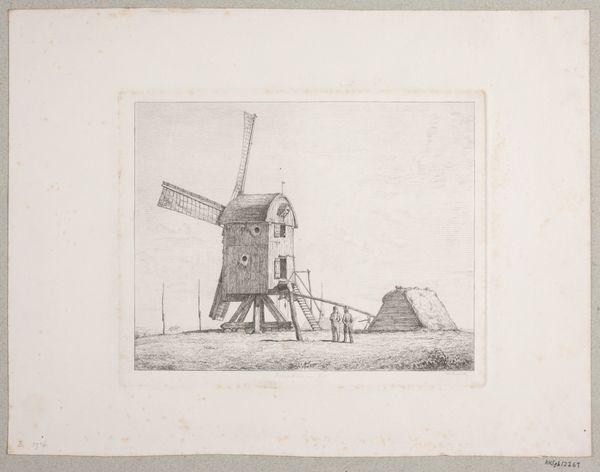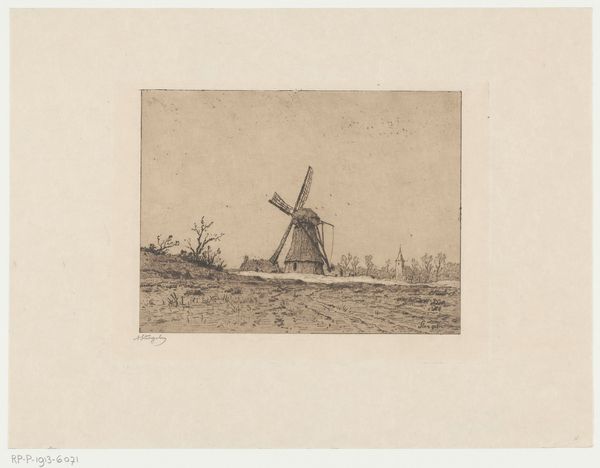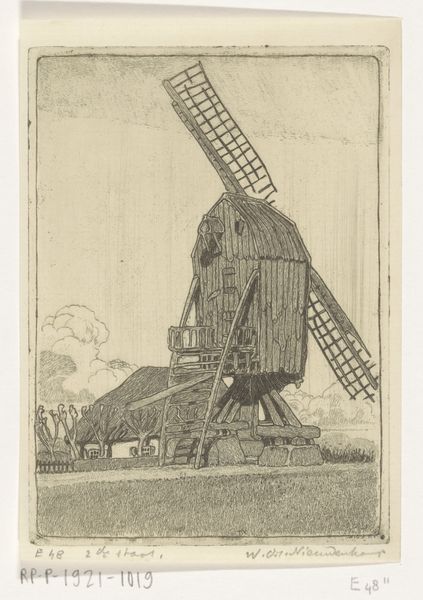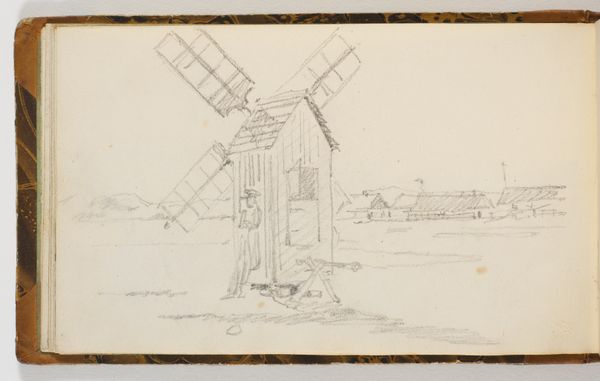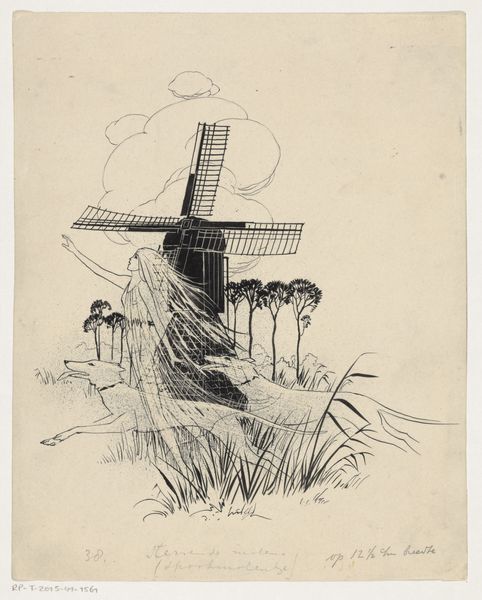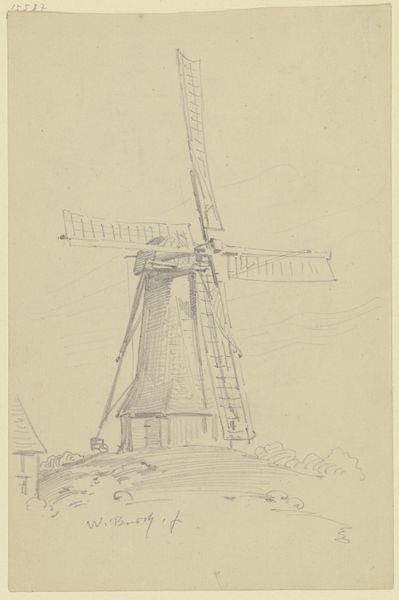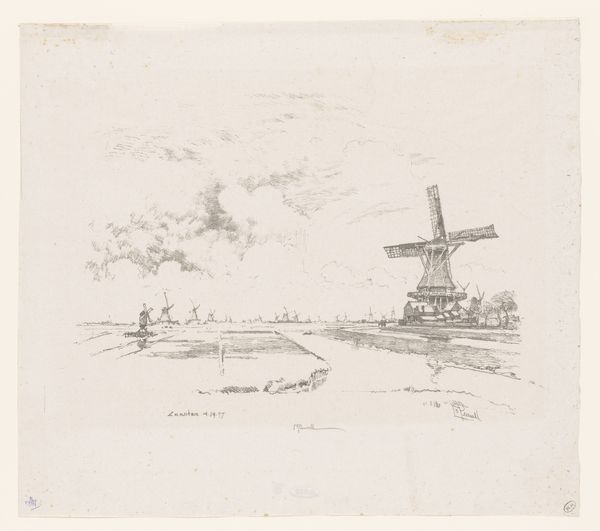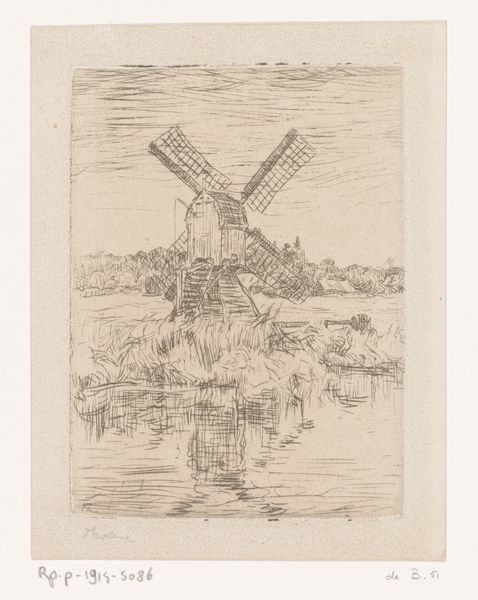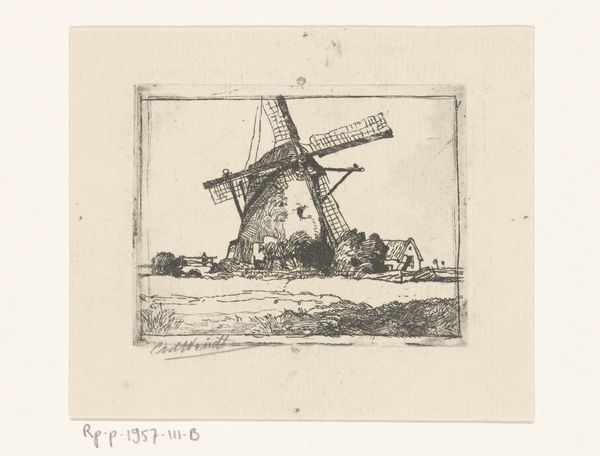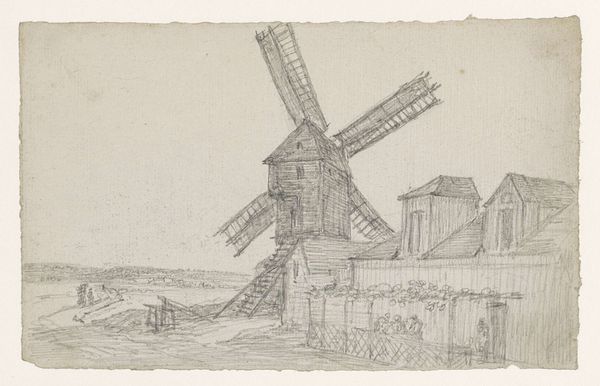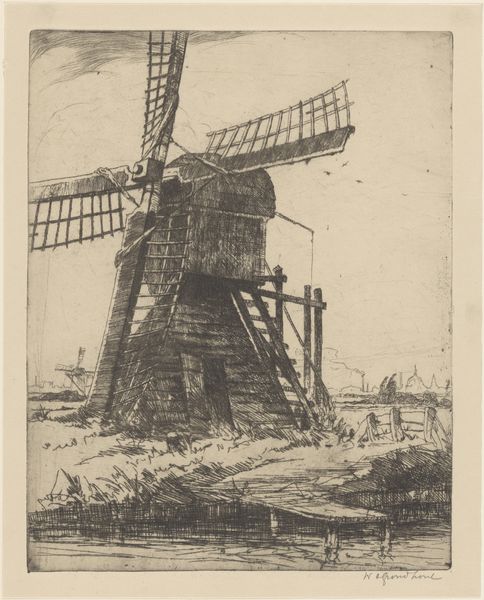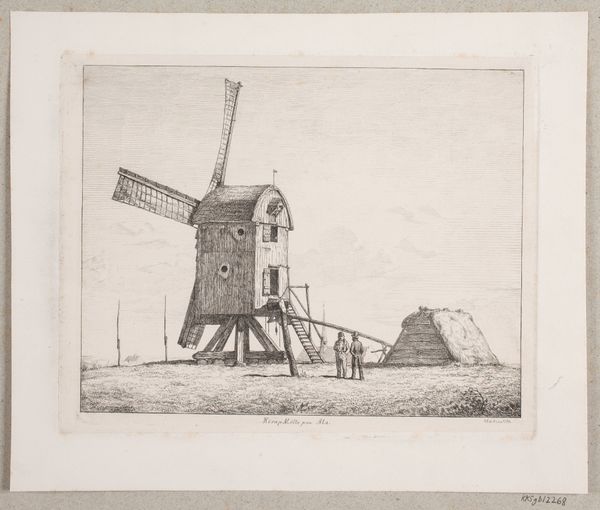
drawing, paper, ink, pen
#
drawing
#
landscape
#
bird
#
paper
#
ink
#
folk-art
#
pen-ink sketch
#
ink colored
#
sketchbook drawing
#
pen
Dimensions: height 197 mm, width 160 mm
Copyright: Rijks Museum: Open Domain
Curator: Henri Verstijnen’s “Vogel bij een molen,” or “Bird by a Windmill,” rendered in pen and ink on paper, presents us with a curious juxtaposition. Created sometime between 1892 and 1940, this small drawing depicts a pastoral scene. Editor: My initial impression is somber. The dead bird so prominently displayed in the foreground lends a funereal air, even amidst the traditional imagery of the windmill. The rough sketching gives it the quality of a memento mori. Curator: That contrast is key, I think. The windmill itself—a potent symbol of progress and industry—is relegated to the background. It suggests a shift in perspective, away from humanity's grand ambitions. In Dutch art, windmills are ubiquitous, serving as markers of cultural identity. What’s potent here, though, is Verstijnen’s purposeful use of one as the backdrop. Editor: Absolutely. And by placing the bird so low, at the level of the earth, nearly obscured by the rough strokes depicting the landscape, there’s a leveling, an almost egalitarian depiction of death regardless of station. The industrial dream literally overshadows it. Perhaps there is a commentary on humanity’s encroachment? Curator: Precisely. This folk-art style drawing embodies layers of meaning. A single, lifeless bird—a traditional symbol of the soul in many cultures—lies before the symbol of an ever-changing landscape. This contrast forces us to contemplate the cost of progress, if there be one at all. It's as if Verstijnen has captured a collective anxiety. Editor: The starkness of the black ink against the paper further underscores the feeling of stark realism, even bleakness. Although the period is marked by innovation, there were many social commentators decrying a loss of cultural touchstones. Curator: A subtle reminder that what appears constant is always subject to change, decay, and ultimately, mortality. Even windmills eventually crumble. Editor: It’s an invitation, then, to actively question narratives of unwavering progress and development. Curator: Indeed. The visual language used reflects how the very essence of the things we hold dear are not as secure as we thought. Editor: And perhaps it encourages reflection upon what true security may actually mean.
Comments
No comments
Be the first to comment and join the conversation on the ultimate creative platform.
